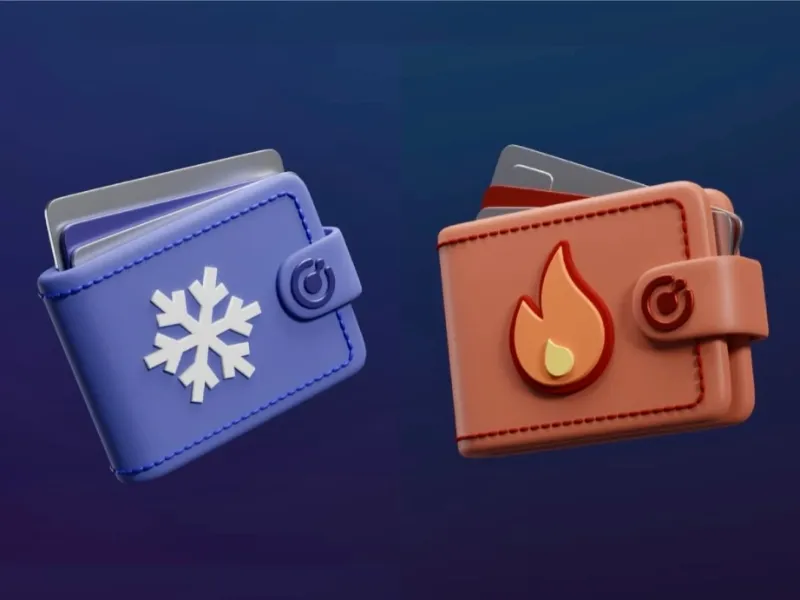- Hot and cold wallets for cryptocurrencies are the two main ways to store and manage digital assets, having their own unique features.
- The online connection of a hot wallet increases the risk of being attacked, while a cold wallet is more reliable and stable in security because it stores private keys offline.
Hot wallet and cold wallet each have their unique advantages and disadvantages and application scenarios. Choosing the right wallet type depends on individual’s asset management needs. For most users, keeping a small portion of assets in a hot wallet for daily use, while keeping the majority of assets in a cold wallet for long-term custody and safe storage, is probably a reasonable strategy.
What is hot wallet
A hot wallet is a digital wallet that is connected to the Internet and available through an online service or software application. Hot wallets are connected to the blockchain network via the Internet, so balances can be viewed and cryptocurrencies sent and received in real time.
Thanks to the online connection, Hot Wallet provides a convenient access and use experience. Users can manage their assets at any time using a computer, mobile phone or tablet device, making it particularly suitable for frequent trading activity.
Hot wallets support real-time transactions, and users can quickly send and receive cryptocurrencies with fast response times. Since hot wallets are online, they are at risk of cyber attacks such as hacking or malware intrusion.
Also read: COCA launches global non-custodial crypto debit cards
What is cold wallet
A cold wallet is a digital wallet that stores private keys offline, usually in an offline device or physical medium. The private key of a cold wallet is generated and stored completely offline and is not connected to the Internet, so the risk of being hacked can be greatly reduced.
Since private keys are stored offline, cold wallets are generally considered a more secure option. Private keys are not susceptible to cyber attacks, malware or viruses, providing an extra layer of security. Cold wallets are particularly suitable for holding cryptocurrencies for a long time without requiring frequent access, such as investors using their assets for long-term storage and value preservation.
The main risk of cold wallets is physical security, such as the risk of loss, damage to the device, or failure to properly keep the private key. Therefore, a backup strategy and physical security measures are critical.
Also read: Crypto wallets vs crypto exchanges: How they compare
Compare hot wallet with cold wallet
1. Security: The online connection of hot wallets increases the risk of being attacked, and although modern hot wallets provide multiple levels of security measures, such as encrypted storage, two-factor authentication, etc., there are still certain security risks. In contrast, cold wallets are more reliable and stable in terms of security because they store private keys offline.
2. Convenience: Hot wallets are obviously superior to cold wallets because of their convenience and immediacy. Users can access and manage assets through the Internet anytime, anywhere, for fast trading operations. Cold wallets, while highly secure, require additional steps and actions when used, such as importing a private key into an online device in order to conduct a transaction.
3. Application scenarios: Hot wallets are suitable for users who need frequent transactions and quick access to assets, such as daily purchases or trading activities. Cold wallets are more suitable for long-term holding and custody of assets, such as long-term investors or users with high security requirements.

